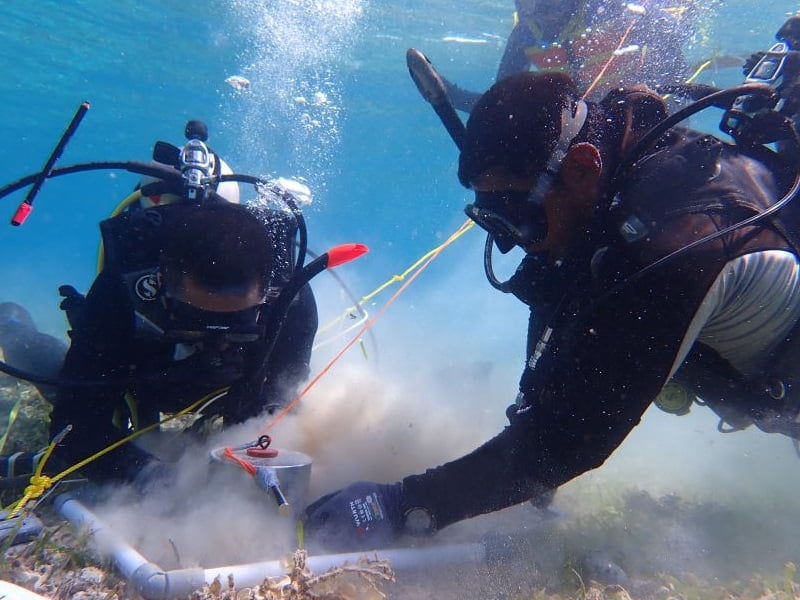A new research project between national science agency the CSIRO and Google will seek to better understand blue carbon ecosystems in the Indo-Pacific and Australia through the use of machine learning.
Blue carbon refers to the carbon captured in the world’s oceans and coastal ecosystems, namely mangroves, seagrass and tidal marshes. According to the CSIRO, restoring these ecosystems to their former glory could help to mitigate greenhouse gas emissions.
Under the $2.7 million partnership, scientists, researchers and engineers from Fiji, Indonesia, CISRO, Google and Alphabet-backed moonshot Tidal will explore new ways to monitor carbon sequestration.

CSIRO and Google will work in collaboration with the Department of Foreign Affairs and Trade, with field work already underway in the Lau Islands in Fiji and Labuan Bajo in Indonesia.
The researchers will use Google’s artificial intelligence platform technology to analyse imagery of seagrass and marine fauna collected from multiple sources, instead of undertaking manual analysis.
The use of machine learning is expected to lead to “more scalable and cost-effective” mapping and data modelling, CSIRO said.
Carbon assessment methods have traditionally relied on remote geospatial and aerial sensing platforms, which can be impacted by cloud cover, the angle of the sun and weather.
Announcing the project on Friday, CSIRO chief executive Dr Larry Marshall said the partnership would “help create tailored and cutting-edge solutions” that strengthen climate resilience.
It has been jointly funded through Australia’s Science and Technology for Climate Partnership and Google’s $1 billion Digital Future Initiative. In-kind funding is also being provided by other partners.
“Harnessing the capabilities of our partners and building on our past success in the application of AI and digital technologies will provide unique insights for local communities and national governments who are tackling big climate challenges,” Mr Marshall said.
Industry and science minister Ed Husic said the “sophisticated techniques for gathering data about biodiversity and habitats” developed could be used to inform future policies and climate change action.
Google Australia and New Zealand managing director Mel Silva said the partnership had been made possible by the company’s Digital Future Initiative.
The initiative has already seen the tech giant launch a research hub, partner with the CSIRO on clean energy and Macquarie University of quantum computing, and create a micro-credentialling program.
“We are thrilled to partner with CSIRO and DFAT to explore new applications of AI for carbon sequestration,” Ms Silva said.
“Our shared goal is to support long-term climate resilience and improve access to technology for developing nations in the Indo-Pacific region.”
In June, the federal government announced a $9.5 million investment in five blue carbon restoration projects in Queensland, South Australia and Tasmania.
Australia is home to about 12 percent of the world’s blue carbon ecosystems.
Do you know more? Contact James Riley via Email.

